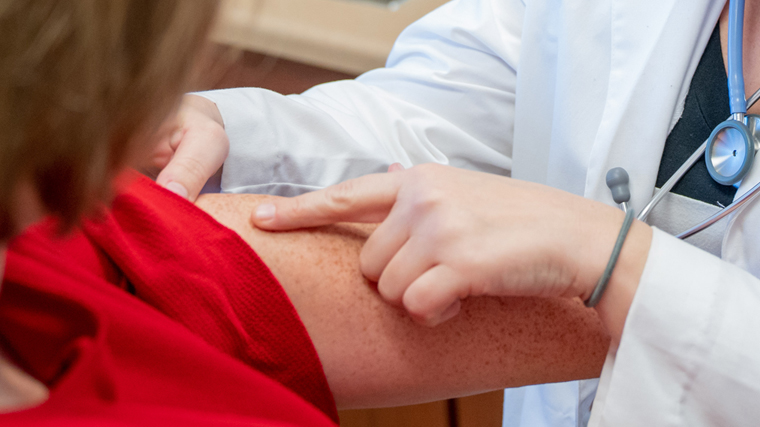Is This Lump a Sarcoma? Lipoma? Learn the Difference

Find Your Perfect Match
Answer a few questions and we'll provide you with a list of primary care providers that best fit your needs.
Although their names sound alike, and at first glance they may look alike, sarcomas and lipomas are very different. One is common and usually harmless. The other is less common and potentially fatal. Matthew Doepker, MD, with Premier Surgical Oncology, explains.
What’s a Lipoma?
Lipomas are non-cancerous fatty tumors, commonly found on the neck, shoulders, back, abdomen, arms, and thighs. “We’re not sure what causes them, but they tend to run in families,” says Dr. Doepker. They’re especially common in people between the ages of 40 and 60, and are equally common in males and females.
Lipomas grow just beneath the skin, feel squishy to the touch, and can be pushed around a bit with pressure from your fingers. Although lipomas are rarely serious, if you have one (or several), you may decide to have them removed. They’re typically less than two inches in diameter, “but they can grow quite large, and sometimes cause discomfort and pain,” says Dr. Doepker. And they can be unsightly, which is another reason you may choose to have yours removed.
What’s a Sarcoma?
A sarcoma is a malignant (cancerous) tumor that begins in your muscle, fat, cartilage, connective tissue, blood vessels, or bones, says Dr. Doepker. “They usually appear on the arms, legs, or the trunk of the body. But sometimes a sarcoma will grow inside the abdomen. When inside the abdomen, they can get very large and cause pain, bloating, a change in bowel habits, and weight loss.”
Doctors aren’t sure what causes sarcoma, but they believe your risk is greater if you have family members who also have sarcoma. And if you’ve been exposed to radiation to treat another cancer, you have a slightly increased chance of developing sarcoma (less than 5 percent).
A sarcoma can grow to five inches or more. “Unlike a lipoma, a sarcoma is firm,” says Dr. Doepker. “You typically can’t push it around. And they can be tender to the touch. If your sarcoma is growing near a nerve, it may invade the nerve and cause a tingling or burning sensation. If it was on your arm, for example, you could lose function of your arm.”
Generally, sarcomas need to be surgically removed, Dr. Doepker explains. “If they are very large, or if they are invading a nerve or blood vessel, we may suggest radiation to help shrink the tumor first. Our goal is to remove the tumor completely and not leave any disease behind.” The earlier a sarcoma is found, the less likely it has spread, and the better the outcome. The five-year survival rate for someone with sarcoma is about 65 percent. “If a patient can come to surgery, have the tumor completely removed with no disease left behind, their survival rate can be very good.”
At a Glance: Sarcoma vs. Lipoma
Sarcoma | Lipoma | |
What it is | Cancerous tumor | Harmless lump of fatty tissue |
How it feels | Firm. Unable to be moved with pressure from fingers. | Squishy. You can push it around. |
Typical size | Up to 5 inches or more | Less than 2 inches |
Tender to the touch? | Yes | No |
Recommended treatment | Remove if possible | Remove if bothersome |
When Should You See a Doctor?
“I always tell patients they are their own biggest advocate,” says Dr. Doepker. “If there is something you’re concerned about, come to the office and we’ll have a discussion about it. We’ll develop a treatment plan if needed.”
To learn more about sarcoma and lipoma, talk to your doctor or health care provider or search for a provider.
Find Your Perfect Match
Answer a few questions and we'll provide you with a list of primary care providers that best fit your needs.
Source: Matthew Doepker, MD, Premier Surgical Oncology; National Institutes of Health; American Cancer Society





